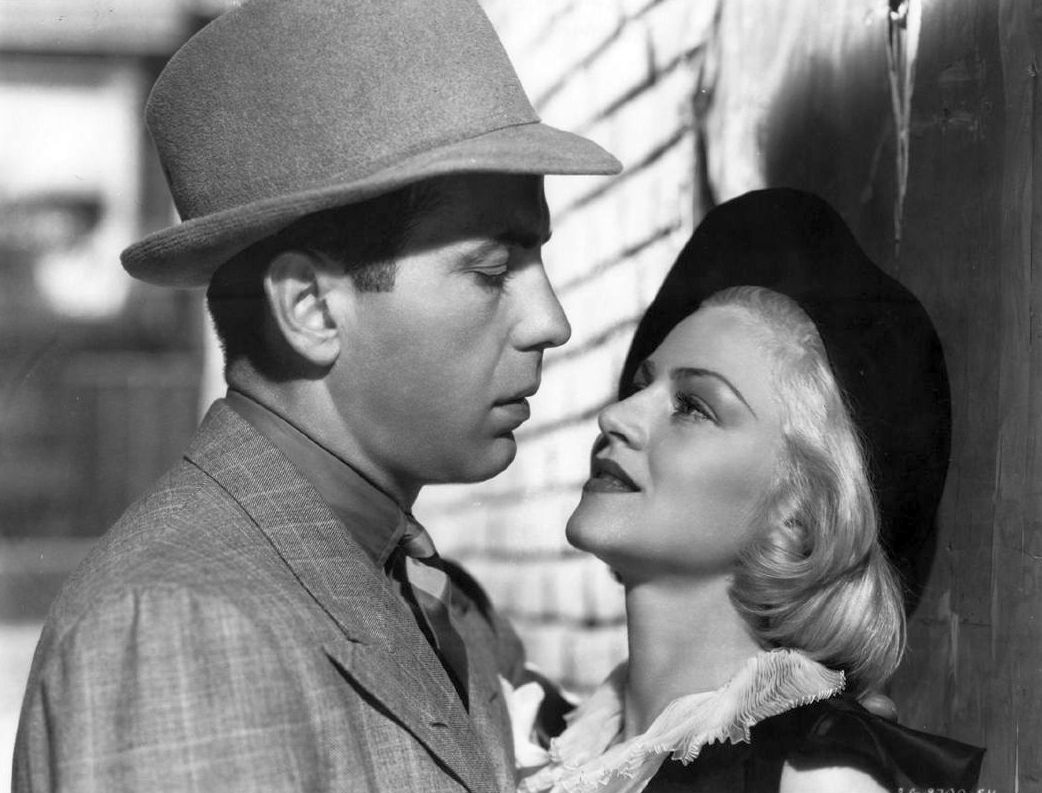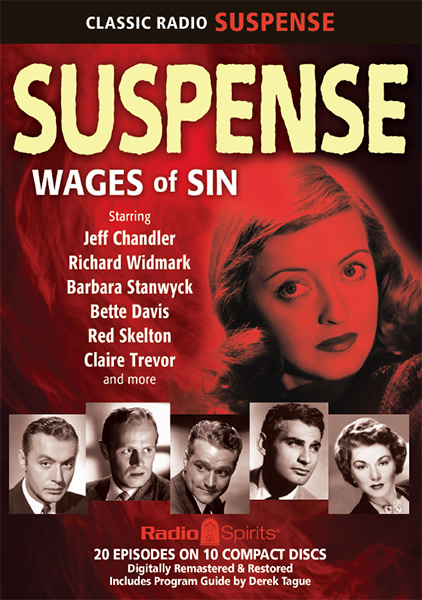Happy Birthday, Claire Trevor!
Posted by Ivan G. Shreve, Jr. on Mar 8th 2017
On March 24, 1949, actress Claire Trevor—born in Brooklyn, NY on this date in 1910—received one of the highest honors a performer can obtain from their peers in the motion picture industry: an Academy Award for Best Supporting Actress. The role for which Trevor garnered her Oscar was that of Gaye Dawn in the film Key Largo (1948)—a faded torch singer now coating her sugar throat with liberal applications of booze. Who can ever forget Gaye’s pitiful attempt to belt out “Moanin’ Low” in exchange for one little drink…only to be refused by her abusive boyfriend, mobster Johnny Rocco (memorably played by Edward G. Robinson)—who reneges on his promise by telling her “But you were rotten.” I’ve always thought it fascinating that Claire got her statuette for this film…because in appearing opposite Robinson, it’s almost like watching their Big Town characters, Steve Wilson and Lorelei Kilbourne, in some Bizarro-universe where Steve quit the newspaper game to join the rackets.
Claire Trevor started out in life as Claire Wemlinger—the only daughter of Benjamina (“Betty”) and Noel, a Fifth Avenue merchant tailor. Though born in Bensonhurst, Claire spent her formative years in Larchmont, NY, attending high school in Mamaroneck before going on to Columbia University (where she studied art) and then the American Academy of Dramatic Arts (she had wanted to be an actress since the age of 11). By the late 1920s, Trevor was performing in theatrical stock companies and made her Broadway debut in 1932 in Whistling in the Dark. (Her co-star, Ernest Truex, would reprise his starring role in that play in a 1933 film adaptation…but Claire’s part was portrayed in the movie by Una Merkel.)
While performing on Broadway, Claire Trevor got an apprenticeship appearing before the motion picture camera by making shorts for the Vitaphone company, like The Meal Ticket (1931) and The Imperfect Lover (1932). When a play in which she had a starring role, The Party’s Over, was an enormous flop, Claire was fortunate that 20th Century Fox offered her a five-year contract—though she was disappointed that she couldn’t continue to work in the theatre, economic realities (jobs were scarce) dictated she move to Hollywood in 1933. Her stay at Fox was marked by a series of programmers in which she played a lot of tough, hard-bitten female reporters; most of these films rarely see the light of day on Turner Classic Movies or Fox Movie Channel, save for exceptions like 1934’s Baby Take a Bow (Claire plays Shirley Temple’s mother) and Dante’s Inferno (1935), in which she acted opposite Spencer Tracy.

Claire Trevor would eventually leave Fox for better roles…and landed one almost immediately in 1937’s Dead End—where she played a tubercular prostitute and the old flame of gangster Humphrey Bogart. That role earned her the first of her three Academy Award nominations and, in a sense, became her cinematic stock-in-trade: gangster’s molls in crime pictures and dance hall girls in Westerns. She returned as Bogie’s girl in The Amazing Doctor Clitterhouse (1938—which also featured her Big Town co-star, Eddie G.) and gave mobster husband George Raft moral support in I Stole a Million (1939). Trevor received top billing in Stagecoach (1939)—the movie that cemented John Wayne’s stardom—as a bar girl run out of town by a contingent of nosy biddies. Claire would later appear opposite The Duke in Allegheny Uprising (1939) and Dark Command (1940) …and in 1954, as a member of the all-star cast in Wayne’s The High and the Mighty, she earned her final Best Supporting Actress Oscar nomination.
In the world of film noir, Claire Trevor had no equal when it came to playing femme fatales—witness her in Street of Chance (1942), in which she misleads Burgess Meredith (suffering from amnesia) into thinking he’s wanted for a murder. One of her finest roles (and my personal favorite) is in 1944’s Murder, My Sweet as Helen Grayle, the seductive temptress who turns the knees of P.I. Philip Marlowe (Dick Powell) to jelly. Claire followed this with a succession of turns in such noir classics as Johnny Angel (1945), Crack-Up (1946), Born to Kill (1947—her nastiest femme fatale onscreen, hands down), Raw Deal (1948), Borderline (1950), Hard, Fast and Beautiful (1951), and Hoodlum Empire (1952). Other vehicles that are all the better for featuring Trevor include Texas (1941), Crossroads (1942), The Woman of the Town (1943), The Velvet Touch (1948), and Best of the Badmen (1951).

From 1937 to 1940, Claire emoted opposite Edward G. Robinson on the previously mentioned radio series Big Town. Trevor would relinquish her role to Ona Munson after complaining that the part had been reduced to two lines: “I’ll wait for you in the car, Steve” and “How’d it go, Steve?” But Claire never completely abandoned the aural medium: her radio resume includes appearances on such radio anthologies as Academy Award Theatre, The Cavalcade of America, The Gulf/Lady Esther Screen Guild Theatre, Hollywood Star Playhouse, Hollywood Star Time, The Lux Radio Theatre, Screen Director’s Playhouse, Suspense, The Theatre Guild on the Air, and The Theatre of Romance. Claire stood before the mike on AFRS broadcasts of Command Performance, G.I. Journal, and Mail Call, and guested on programs headlined by Bud Abbott & Lou Costello, Jack Carson, Bob Hope, and Dean Martin & Jerry Lewis. Trevor would also appear with Lloyd Nolan on Results, Inc.—a lighthearted comedy-mystery program heard briefly over Mutual in 1944.
Claire Trevor continued to work regularly in motion pictures until 1967 (though she would return for a small role as Sally Field’s mother in 1982’s Kiss Me Goodbye) with memorable turns in Marjorie Morningstar (1958), Two Weeks in Another Town (1962—her third and final outing with Edward G. Robinson), and How to Murder Your Wife (1965). The actress also began making appearances on the small screen with guest shots on boob tube hits such as Wagon Train, Alfred Hitchcock Presents, and Dr. Kildare; one of her major television triumphs was winning an Emmy Award for her performance in a 1956 production of Dodsworth on NBC’s Producers’ Showcase. After retirement, she maintained an active interest in stage work and, with her third husband, contributed close to $10 million to The School of Arts at the University of California-Irvine. With her death in 2000 at the age of 90, UCI renamed the school The Claire Trevor School of the Arts…with her Academy Award for Key Largo also finding a permanent home there, displayed in a glass window located in the school’s arts complex.

One of the many movie actors who worked alongside our birthday girl was westerns icon Randolph Scott—and the two films they made together, The Desperadoes (1943) and The Stranger Wore a Gun (1953), are available in the DVD collection Randolph Scott Round-Up Volume 2, available for purchase here at Radio Spirits. We’ve also Claire to spare in the Big Town collection Blind Justice—a collection of classic broadcasts including a few rarities from Trevor’s years on the program. For dessert? Sample two of Trevor’s guest star appearances on “radio’s outstanding theatre of thrills” with Suspense: Ties That Bind (“The Plan,” from May 16, 1946) and Suspense: Wages of Sin (“Angel Face,” May 18, 1950). Happy birthday to one of our favorite “wanton women” from the movies!

